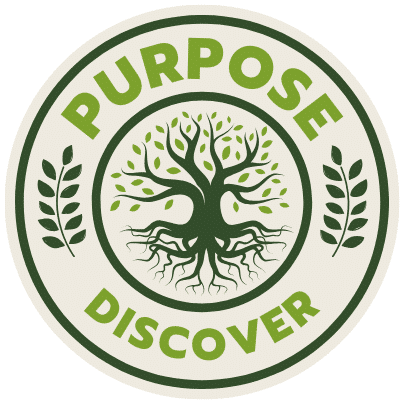Ever catch yourself trudging through days that feel like a slow-motion replay of the last? Wake up, work, eat, sleep, repeat. Somehow, that loop doesn’t just drain your energy—it swallows your spark. It’s like you’re alive, but only barely. Stuck in survival mode. And here’s the kicker: survival mode isn’t just about external chaos or crisis. It sneaks in quietly, turning your existence into a series of coping mechanisms rather than actual living. You’re not thriving; you’re just patching the cracks to keep afloat.
What does it really mean to live with purpose instead of merely surviving? This isn’t some lofty idea reserved for monks on mountaintops or folks who’ve won life’s lottery. It’s about grabbing the reins from autopilot and steering toward something that makes your heart beat a little faster, that makes your mornings worth waking up to. Purpose is less about having every answer, more about asking the right questions.
Why settling for “just coping” feels like a trap you don’t notice until you’re well inside it
There’s a sneaky comfort in just managing to get by, isn’t there? When life hurls curveballs, it’s easier to hunker down in survival mode. It’s your brain’s way of saying, “Hey, we’ll just focus on the basics: breathe, eat, stay safe.” But here’s the thing—staying in this mode long-term isn’t exactly a recipe for joy or fulfillment. It’s like running on a hamster wheel that’s slowly wearing down your soul.
Being in survival mode often looks like a fog. You might feel exhausted but wired, anxious but numb, overwhelmed but stuck. The daily grind becomes about putting out fires rather than lighting candles. Your thoughts are survival strategies: How do I keep my job? How do I get through this week? When does the weekend start? It’s a cycle that chips away at your sense of self and leeches away your capacity to dream.
You don’t have to be in a life-or-death crisis to feel this way. Even in quieter moments, survival mode can creep in through perfectionism, people-pleasing, or the relentless need to “stay productive.” The problem is it becomes your default setting without you realizing it.
Finding your north star: what living with purpose looks like
Living with purpose is not about having every detail of your life planned out like a military operation. It’s more like having a magnetic north that gently pulls you forward. That pull could be a creative passion, a commitment to your family, a cause that gets you fired up, or even just a daily practice that centers you.
Purpose doesn’t mean your life suddenly becomes easy or free of struggle. It means your struggles have meaning, your challenges have context. When you live purposefully, disappointments don’t crush you entirely—they become part of a bigger story, your story. You start to recognize that your actions, big and small, contribute to something that matters to you.
The beauty of purpose is that it transforms mundane routines into rituals. It turns work into a craft, chores into acts of care, and relationships into classrooms for growth. It’s waking up excited despite imperfections and setbacks because you’re engaged in something real.
But how do you find this elusive sense of purpose?
The messy, human way to shift gears from coping to thriving
No one hands you a map to purpose, and if they say they do, run. Finding your purpose is messy and feels less like a lightbulb moment and more like tuning an old radio, catching snippets of a song through the static.
Start by noticing what drains you versus what fuels you. What activities leave you feeling energized and alive? What conversations spark your curiosity rather than exhaustion? Sometimes, purpose hides behind tiny clues: a hobby you forgot you loved, a volunteer gig you enjoyed years ago, or a cause that makes your blood boil (in a good way).
Give yourself permission to fail, to try things poorly, and to change your mind. Purpose isn’t a monolith carved in stone. It’s a living, breathing thing that evolves with you. When you stop chasing an ideal version of life and start experimenting with what feels meaningful, the fog begins to lift.
Talking to others can help, too. Sharing your thoughts and struggles with friends or mentors invites new perspectives. Sometimes, purpose emerges from the collective rather than the solo journey. You might find your calling in how you support others or co-create something bigger than yourself.
The role of mindfulness and boundaries in escaping survival mode
If survival mode feels like a crowded, noisy room in your mind, mindfulness is the sudden hush that lets you hear yourself think. It’s not about meditation per se—though that’s one way—but about being present enough to catch when you’ve slipped into autopilot.
When your mind is constantly busy putting out fires, you lose sight of what you want versus what you think you should do. Mindfulness helps you differentiate between those two voices. It’s the practice of recognizing your thoughts and feelings without getting swallowed by them.
Boundaries are the unsung heroes in this struggle. Saying “no” to demands that drain you is a radical act of self-care. It carves out space for the things that actually nourish your spirit. In survival mode, boundaries might feel risky or selfish, but they’re essential if you want to reclaim your life.
Think of boundaries as fences around a garden you’re tending. Without them, everything gets trampled. With them, you create a space where your purpose can grow.
When life hits you hard, purpose can be the soft landing
Life throws us curveballs, that’s a given. Illness, loss, uncertainty—they shake us to our core. When everything feels unstable, it’s tempting to cling even tighter to survival mode, to just get through the next hour. Yet it’s precisely in those moments that purpose can be a lifeline.
Purpose doesn’t erase pain, but it gives it context. It makes the suffering a part of something larger than despair. When you’re connected to your deeper why, hardship feels less like an ending and more like a chapter.
If you’ve ever felt like your pain isolated you, purpose can remind you that you’re part of a bigger human story. It’s messy, heartbreaking, joyful, and endlessly complex. And in that complexity, there’s room for you to breathe and grow.
Your move: small steps that make a big difference
Here’s the honest truth: moving from survival mode to living purposefully isn’t a one-and-done overhaul. It’s a daily choice, a series of small pivots that slowly rewrite your story.
Try this: carve out five minutes each day to check in with yourself. What do you need? What do you want? What lights you up? Jot down your thoughts without judgment. Over time, patterns emerge.
Challenge the “shoulds” that box you in. Instead of “I should be more productive,” ask “What would feel meaningful right now?” Notice how your answers change with your mood, energy, and circumstances.
Surround yourself with people who inspire you rather than drain you. Purpose thrives in communities, not in isolation.
If you’re curious about digging deeper into this journey, there’s a treasure trove of resources waiting on the site discovering your unique life direction can offer.
Sometimes the greatest act of courage is admitting you want more than just survival. You want to live. Not just exist, but truly live—with intention, passion, and a sense of belonging.
If you’ve read this far, maybe you’re already on your way. Keep going. The life you want isn’t waiting for you somewhere out there; it’s being built in the small moments you claim today. Purpose isn’t a destination. It’s the art of living fully awake, even when the world feels heavy. You owe it to yourself to keep searching.

